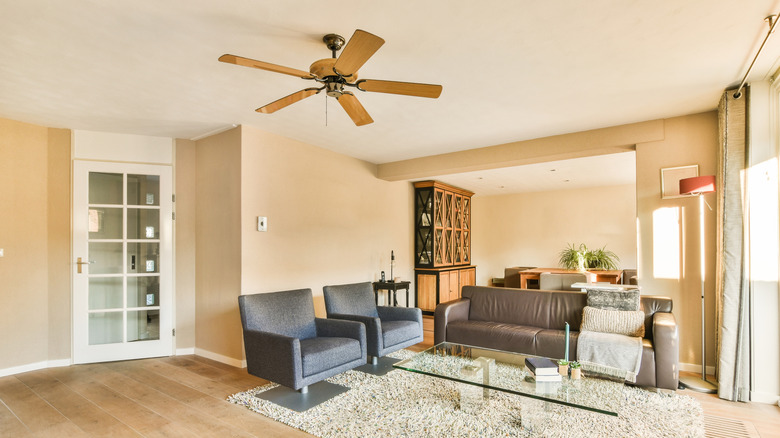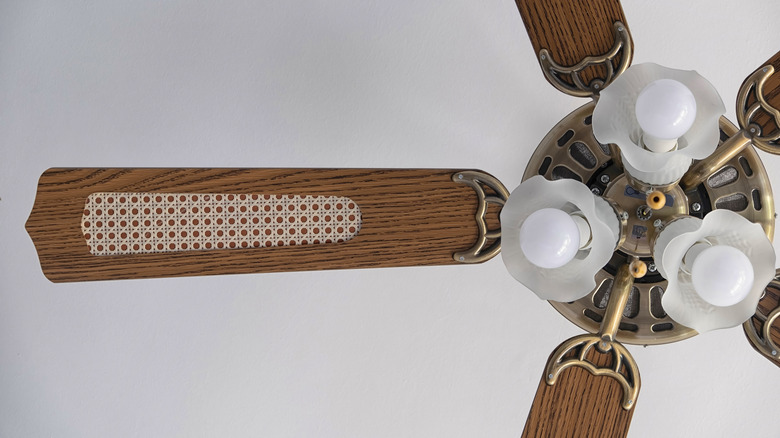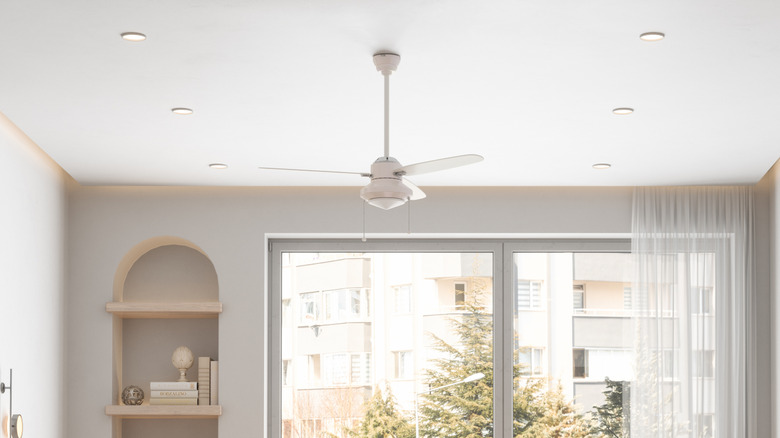Why Designers Think These Ceiling Fans Aren't Cool Anymore (And How To Choose A Better Option)
While comfort is a cornerstone of good home design, the appeal of some practical fixtures, like ceiling fans, is beginning to lose favor among designers and homeowners. As air conditioning units and systems have become more common in homes, these fans can feel outdated, both in function and style. Many homes continue to incorporate ceiling fans as a cost-effective cooling solution and with modern designs and enhanced capabilities, so not all of these fixtures are falling out of favor. That said, designers are particularly critical of bulky ceiling fans, as they look too dated and oversized, and often clash with the overall style of your space.
If you want to upgrade your clunky ceiling fan with something stylish and designer-approved, opt for minimalist fan designs or swap it out entirely for a chic light fixture to elevate your space. Ceiling fixtures are a focal point in any room, so it's crucial to choose a design that will benefit your style, rather than detract from it. There are plenty of contemporary ceiling fans and trendy lighting options to choose from, and these sleek styles could be just what your design needs to come together beautifully.
Why designers avoid bulky ceiling fans
While every designer has their own preferences, one thing they all seem to agree on is their distaste for bulky ceiling fans. They're the popular home feature that HGTV's Leanne Ford and Nate Berkus can't stand, and this sentiment is widely shared within the interior design community. Many professionals avoid these fixtures all together for their tacky appearance and noisy disturbances, often making them the first feature to be replaced during home renovations. However, this doesn't mean ceiling fans have no place in home design — the key is to avoid styles and sizes that are bulky.
There are a few red flags to watch for when determining if a ceiling fan is bulky, like fans with more than three blades or oversized designs that overwhelm the space. Fans that are hung closer than 7 feet above your floor can appear intrusive and make the room feel too cramped. Also, fans that combine multiple lights tend to look busy and detract from their primary function of air circulation. Ideally, your fan should have a minimalist look that blends in with your ceiling design, as fixtures that have a bold or contrasting style will be too distracting and stick out like a sore thumb. Designers also believe that there are certain spaces where ceiling fans can work best, like porches or sunrooms where the airflow enhances an indoor-outdoor appeal, but bulky designs are generally unnecessary in most rooms.
Finding a stylish ceiling fan alternative
It's not the function of ceiling fans that designers dislike — it's the outdated and bulky models that can derail design. Modern interior styles favor minimalism, so you should upgrade your ceiling fan with a model that reflects simplicity. Go for fans with three blades that come in light, neutral colors that will blend in with your ceiling. If the fixture already has a minimal design, but the colors stick out too much against your ceilings, try an inexpensive way to update an outdated ceiling fan — using spray paint and contact paper to give it a more understated color refresh.
In terms of size, you want to make sure you pick a ceiling fan that doesn't hang too low, making flush mount fans a great option for rooms with ceilings 8 feet or shorter. Fan blades range in size from 29 to 54 inches, but small rooms with walls under 12 feet should avoid any style with blades that extend past 36 inches.
Designers often criticize ceiling fans with excessive lighting, so choose styles with a single, sleek light, or no lights at all. If lighting is your priority, consider replacing the ceiling fan entirely with a modern flush mount light or a chic chandelier. If your fan tends to sit around and gather dust, replacing it with a more practical and contemporary light fixture allows you to use your ceiling space wisely and leave bulky, outdated designs in the past.


